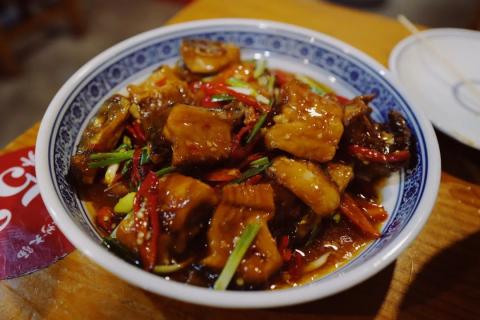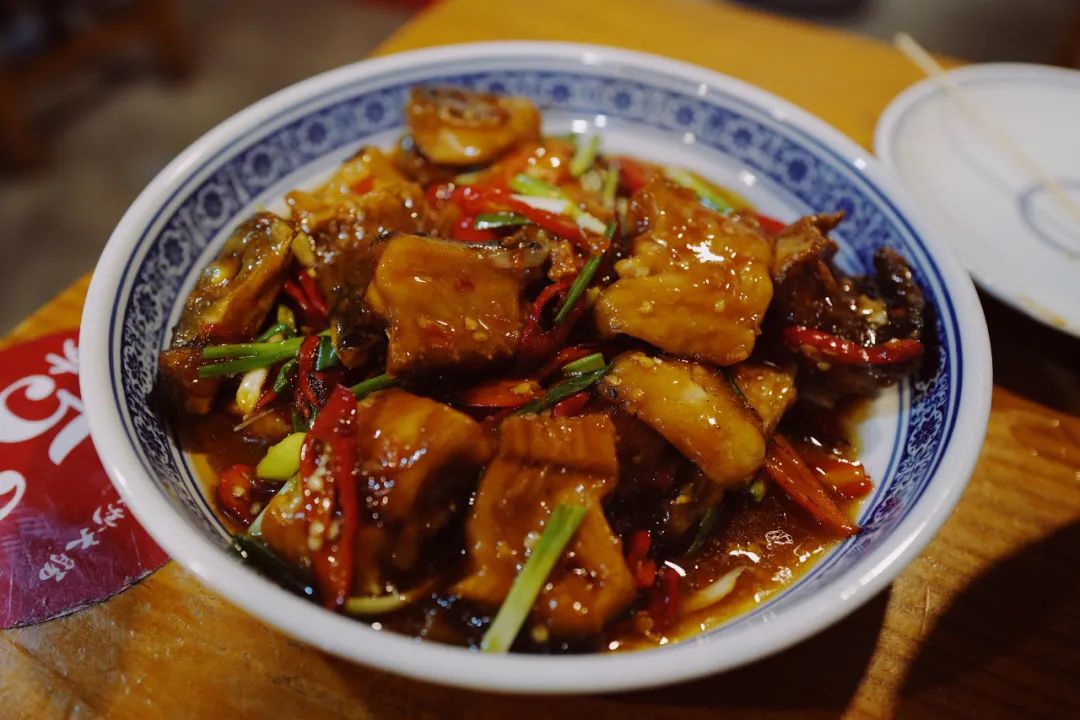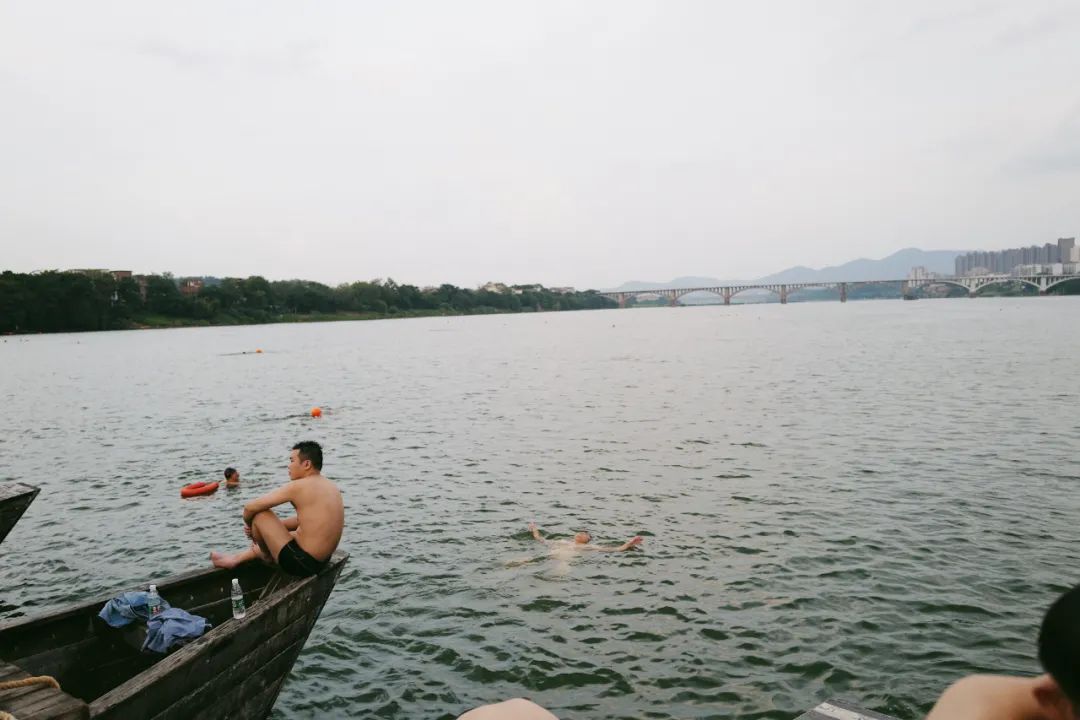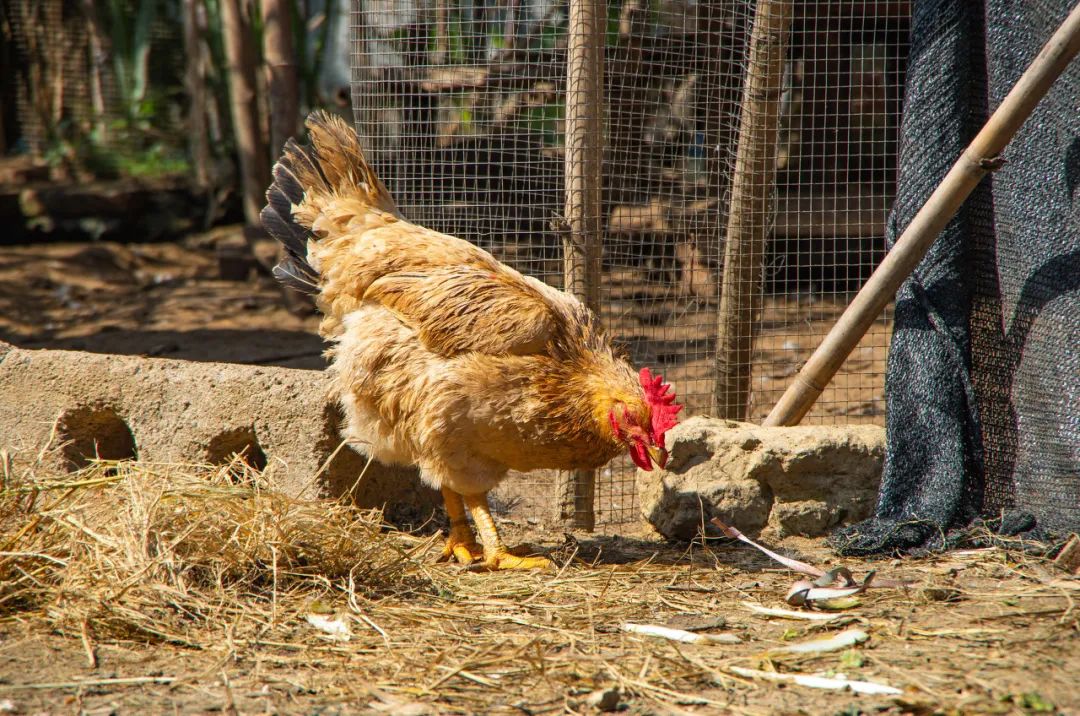
I wrote about Ganzhou Food a few days ago. In the comments, some locals recommended more delicious food, and some friends who had studied or worked in Ganzhou said it brought back memories.
China’s food map is too rich. Under the top of the food pyramid in Changsha, Sichuan, Chongqing, and Guangzhou, there are so many delicious places. It’s important to go and have a meal before they are famous.

A delicious place may not always be a fun place, but the Creator not only opened the door to delicious food in Ganzhou, but also left a window to enjoy the scenery . During my few days in Ganzhou, my favorite thing was to stroll along the ancient floating bridge, watch the sunset on the river, and watch the locals having fun by the river. They had a great time, and my mood as a tourist also improved inexplicably.

Therefore, this time I want to talk to you about how to experience the slow life in Ganzhou , as a bonus benefit of the food chapter.

Ganzhou, the protagonist of the inspirational script
Although Ganzhou has a slow pace, it holds a truly inspirational script. It used to be mocked as the poorest place in Jiangxi, but now it is The GDP of this city is second only to Nanchang in the province. , this turnaround was really a brilliant one. I also heard Ganzhou is planning a subway , it is still worth bragging about building subways in non-provincial capital cities.

It is reasonable for Ganzhou to take the leading role. Although Nanchang is the provincial capital, Ganzhou is the city with the largest area and most population. Hunan is on the left, Fujian is on the right, and Guangdong is below. It is not only surrounded by mountains, but also surrounded by food giants. Delicious food may be contagious.

Because of the mountain barrier and various historical factors, Ganzhou’s customs and customs are very special in Jiangxi .
Readers have always retorted to me that "Jiangxi is spicy and tender". After considering the opinions of all parties, I found that each city in Jiangxi has its own spiciness index: Pingxiang is abnormally spicy, Nanchang is medium spicy, and Ganzhou is slightly spicy. If you want to eat Jiangxi food but are afraid of spicy food, then Ganzhou is a good choice.

If spiciness is a common denominator, then Hakka culture is completely unique to Ganzhou. Fujian and Guangdong also have Hakka culture, but 95% of the city's population here is Hakka, and the concentration is definitely the highest. Hakka architecture, customs, and food have given Ganzhou a striking label.

As a travel editor, sometimes I feel like a bit of a scumbag. When I went to Nanchang: It was really delicious, I loved it! Later I went to Jingdezhen: What a small literary and artistic town, I loved it! Arriving in Ganzhou: This city must be popular!

In my opinion,life in Ganzhou is much more pleasant than Nanchang. The ancient floating bridge on the Gongjiang River is a good place for locals to spend time after meals . Some people are selling seafood, some are swimming, some are chatting, and watching the sunset together Falling slowly, such a romantic picture. It’s a moment so beautiful that you’ll want to… stay!

Ganzhou, a leisurely city suitable for walking
In the past, I only knew that Hangzhou and Kaifeng would be named "Songcheng". This time, I discovered that Ganzhou has a "Songcheng Historic District". The old city retains ancient streets, architectural ruins, and even a large section of ancient city wall.

The scenic spots in Ganzhou are all concentrated in Zhanggong District, which is surrounded by two rivers. They are not too far apart from each other, so I think walking is the best way to visit. Autumn is about to come, with the cool river breeze blowing, walking comfortably in the old city, and buying some roadside delicacies. It is a magical day.

City Walk route ( it is recommended to walk in two days ):

First stop: Zaoer Lane
The area starting from the Zaoer Lane archway retains Hakka dwellings in southern Jiangxi left over from the Qing Dynasty, as well as some Huizhou-style buildings and Western-style buildings.


It doesn’t matter whether you appreciate it or not, come here and take a walk , the old scenes of old Ganzhou immediately come alive before your eyes . In the past, this was a very prosperous street with many shops, workshops, and banks. Many Fujian businessmen would come here to do business and open shops.


The cornices on the lintel of the house are very beautiful. The old buildings in Zaoer Lane have not undergone too many rectifications and modifications. It is quite rare to see such an original ancient building. It seemed as if the master or eldest lady of a wealthy family would come out of it the next second.


Nowadays, some of the buildings are preserved as cultural relics, and some are still inhabited. I secretly took a look inside the house and saw a big patio in the middle. I checked this is called a Ganzhong patio-style building.

*Schematic diagram found online
One of the houses was bought in its entirety and was transformed into a restaurant called "Dong's Mansion" where you can eat authentic Hakka dishes at very affordable prices.

However, more residential houses are waiting to be demolished for rectification. These buildings are indeed too old and no longer suitable for living. Old buildings need people to "come alive". Once the renovation is completed, I think this place will become a place for leisure and leisure for all ages, where you can feel the traces of history. , you can also experience the happiness of the new era.


Walking through this area, I found an arcade on the side of the road. It suddenly felt like a geographical crossing. Maybe it was built by an overseas Chinese from Fujian or Guangdong in the past.

Second stop: ancient city wall
Looking across the country, there are really not many cities that retain city walls in their main urban areas, and they have become a very valuable landscape. In the early years, the old city walls were completely demolished in many places because they hindered transportation construction.
Not only does Ganzhou have it, but the 3.6-kilometer city wall is built along the river and the scenery along the way is very beautiful.

By the way, there is no ticket required to go up to the city wall, you can just hop on and off. Usually go up from Jianchun Gate to . This section is the most crowded and the busiest .

Downstairs at the city gate there is an aunt selling a local childhood delicacy - Jiangya popsicle . This is the mung bean popsicle with the highest concentration of bean paste that I have ever eaten , almost no water added, the rustling tastes great.


The city wall on the east side has a stronger flavor of life, with various stalls selling snacks. Recommended mochi and chestnut, they look ordinary but really delicious.


The city wall on the west side is more like a scenic spot, with a large area of antique buildings. Because of the epidemic, a street on the west side that could have been used for sightseeing is not open, which is a pity.

Third stop: Ancient Floating Bridge
The ancient floating bridge is located near Jianchunmen. This is the most comfortable and beautiful place for me in Ganzhou.

I have heard about the floating bridge for a long time, but this was the first time I saw the real thing. In ancient times, it was really like the one in the picture: a row of boats was parked underneath, with wooden planks on top, and the buoyancy of the boats supported the road on the water.

For the sake of safety, the renovated ancient pontoon is of course equipped with reinforced concrete inside, making it very stable. You can even sit in a boat to enjoy the breeze and enjoy the scenery.

The pontoon bridge, which is just a few hundred meters long, seems to be the "Along the River During Qingming Festival" for the people of Ganzhou. There are many fishing boats parked on one side of the bridge, and the fishermen are selling all kinds of river fresh food they have caught. The array is like showing off new year's goods during the Zhejiang New Year, and every bamboo pole is full of hangings.


The ground is also piled high with all kinds of small dried fish, and most of them are bought by locals.



The fisherman couple next to them finished their day's fishing and were sitting on their small fishing boat sorting out their fishing nets. The scene was a bit warm.

A few steps further is a gathering place for swimming enthusiasts. Men and women, regardless old and young all competed here on swimming skills. I was stunned by the various diving moves. Even the children who had just learned to walk joined accompanied by their father and the atmosphere was super joyful.



The end of the pontoon is for fishing enthusiasts. Each person can occupy a small boat without disturbing each other.

After visiting the pontoon, it was almost sunset. I looked up and saw the sunset in the distance. Everything in front of me was so quiet and peaceful. This is exactly how Ganzhou feels to me, the down-to-earth joy of putting on my grandma’s new cotton-padded jacket when I was a kid.

Stop 4: Turtle tail park
The name turtle tail is really cute. I guess it’s because it’s located exactly at the intersection of two rivers, and it’s as pointed as a turtle’s tail, so it’s given such a concrete name. .

The park itself is nothing special, but the view is very wide. Many people enjoy the cool air and chat here, and the environment is very comfortable.


At the same time it is also the departure station for the Ganjiang River Cruise . The route runs along the Ganjiang River and enjoys the scenery on both sides. The whole journey takes 80 minutes, and the ticket price of 68 yuan is really good.


If you want to have a more in-depth experience, it is recommended that you take the Fish Feast flight that only sails on Sundays. The route is similar, but the ticket also includes a meal, where you can eat local specialties.

Fifth stop: Yugutai
The last stop is Yugu Terrace, which is connected to the west city wall. It is also the most scenic spot on this trip (but it doesn’t cost any money).


Yugu Terrace, built in the Tang Dynasty, stands on Helan Mountain. Well, it has basically nothing to do with Helan Mountain in Yinchuan.
Although it only takes 10 minutes to climb to the top, this is indeed the commanding heights in the old town of Ganzhou.

The ancient person who had the deepest bond with Yugutai was probably Xin Qiji , and the scenic spot even built a statue specifically for him. Because when he came to Ganzhou to take office, he wrote a poem called "Bodhisattva Man·Book on the Ostomy Wall of Jiangxi". The first sentence of the poem is: The clear river water under the Yugu Terrace made many passers-by cry.

When I climbed up to Yugu Terrace, I didn't feel the compassion in Xin Qiji's poem. The scenery of the old city that I could vaguely see through the trees, coupled with the cool breeze, made me feel very comfortable.


After going down the mountain and walking along the city wall, you will see a collection of ancient buildings with various restaurants and exhibition halls (due to the epidemic, some exhibition halls are not open).
The Hakka Courtyard is one of the more famous restaurants . It looks like a Hakka house inside. The regret of not being able to visit in Zaoer Lane is made up for. The store also has a variety of dishes, so its local business has always been pretty good.

After eating, you can go shopping next door to Sixianfang. Walking through Jiangjunmen is an antique street where you can eat and drink. It looks pretty with lights at night.


Extra: Southern Grotto Statues
Most of the famous caves in China are in the north, about 14 kilometers away from the City Walk attraction. Tongtianyan is said to be the southernmost group of cave statues in China. .
There are more than one grottoes in Jiangxi, but Tongtian Rock is the largest among them, with about 359 statues, most of which date from the Tang and Song Dynasties.

It is a pity that the grotto is not well protected and has been severely damaged.
In addition to Tongtianyan, there are There are several scenic spots with different carving themes, including Cuiwei Rock, Wanggui Rock, Longhu Rock, etc.

The scenery in the scenic spot is quite beautiful. If you are interested in grotto Buddha statues, it is worth a visit.

Ending: Visit the food court
There are two food streets in Ganzhou: Yuwanli and Diaoyutai. I recommend everyone to go to Yuwan. There are so many restaurants and stalls, and the atmosphere for late-night snacks is so strong that even after two days of eating there, I still feel unsatisfied.

In addition to specialties, grilled fish, crayfish, barbecue, these common late-night snacks in Hangzhou are available here, and the price is much cheaper. I feel that the cost of the train is paid for by eating a few more meals.


I asked the stall owner where the oysters were shipped , and she replied that they were from Fujian, but they would change to Shandong over time. Look, even the owner of the roadside grilled oysters pays great attention to the quality of the ingredients. It is indeed a city of gourmet food.

I also had a magical cold drink - bayberry ice , refrigerated bayberry juice + real bayberry, delicious! The locals buy ten bags and take them home to hoard.

Ganzhou, all eighteen counties are treasures
Ganzhou has 18 counties under its jurisdiction, and these counties are also full of hidden dragons and crouching tigers.
As for the scenery, it is definitely the best in the county. The county has a forest park. Living in the mountains, I breathe oxygen and cleanse my lungs every day.
When it comes to food, Ningdu County is not a big deal. Most of the snacks you can eat in the city come from there.

Currently, there are 8 counties with railway stations in operation. : Xingguo, Xinfeng, Longnan, Dingnan, Yudu, Ruijin, Ganxian, Huichang, no need to worry about transportation.

Longnan: Hakka enclosed house
The Hakka buildings seen in urban areas are not the most typical. The enclosed houses in Longnan are one of the most classic Hakka architectural styles (as well as earth buildings and row houses).

Ganzhou ranks second in terms of number of cities with enclosed houses in the country, and all of these enclosed houses are in Longnan. The local government came up with a slogan: A day in Longnan, a thousand years in Hakka.
Indeed, traditional culture must be preserved more in counties than in cities.


Longnan is definitely a big treasure, and it’s not an exaggeration to spend two days alone there. Last year, it removed counties and established cities, which shows that it does have some potential.
In addition to the enclosed houses, Jiulianshan Primitive Forest Nature Reserve is also worth a visit. Walking in the forest may really absorb the spiritual energy of heaven and earth. Although I am tired every time I climb a mountain, I feel refreshed.

Longnan in spring is a paradise for migratory birds. The Institute of Zoology, Chinese Academy of Sciences is the only bird watching base in China , and has a great background.

Next to Jiulian Mountain is Small Wudang Scenic Area . The mountain is a Danxia landform, which is equally majestic. Transportation in the county is inconvenient and scenic spots are far apart. You can take a taxi or rent a car locally.

Ruijin: the red old capital
Ruijin, which is rarely mentioned today, was the birthplace of China's first red regime - the Provisional Government of the Chinese Soviet Republic. At the same time, it is also the starting point of the Red Army’s Long March . Ruijin definitely deserves to be placed in a prominent position in the history of modern China.

To be more specific, the Red Army’s Long March started from Yunshi Mountain. After Peng Dehuai gave the order, this mountain was given a new meaning - the first mountain in the Long March.

There are nearly 200 revolutionary sites in Ruijin, Yeping Village is the best-preserved group of revolutionary sites in the county. A series of cultural relics such as the "Old Site of the Soviet Union", the Red Army Martyrs Memorial Pavilion, and the Red Army Review Stand are all located in the old site.

When I come to these old places in Ruijin, I feel like I have traveled back in time to the last century. Everything has a sense of the times. I believe it if they say it is the set of a drama of the Republic of China.

The venue of "Er Su University" was visibly more gorgeous than the previous one, and the location was also moved to Shazhouba. If you have a drone, you can see from the air that the building looks like a Red Army octagonal hat.

By the way, the story of "Don't forget the well digger" happened in Shazhouba. The well is still there, and stands next to the stone monument.
There are many red patriotic bases across the country, but without coming to Ruijin, this entire period of history cannot be completed.

Ningdu: Food Paradise
After walking around the urban area of Ganzhou, I firmly remembered the name Ningdu, because it is so popular. Many snacks are prefixed with "Ningdu", and the small gourmet county is worthy of its name.

The most well-known ones are "Ningdu Three Cup Chicken" and "Ningdu Meatballs" . Everyone has eaten them, and they are absolutely amazing. But some readers said that the meatballs I ate didn’t look authentic enough. That’s true. The most authentic ones must be eaten in the place of origin.

Local meatballs can also be fried and eaten. In addition, Leibo Hollow vegetables, fried sauerkraut large intestine, Dingzhan cake, and taro buns are also strong local specialties.

A good cook cannot cook without rice, Ningdu The delicious food is based on the abundant resources, and the geographical location close to the mountain and the river is a gift from God.

*Ningdu local three-yellow chicken
If you have plenty of time to play in Ganzhou, I recommend choosing one of the three counties Ningdu, Ruijin, and Longnan to go with the city together to enrich your itinerary.

I don’t know if it will be the same as before, but someone else left a message saying: What’s so fun about this!
To put it bluntly, Ganzhou is indeed not a tourist city. It does not have well-planned scenic spots and dazzling entertainment venues.

But travel destinations are all about choosing the ones that are most exciting to you and going to see them.
If someone likes delicious food, or likes a place with a slow life, or wants to come and see the "Jiangnan Song City", then it doesn't matter whether Ganzhou is a tourist city, because it is delicious! Comfortable! There are stories to tell too!

